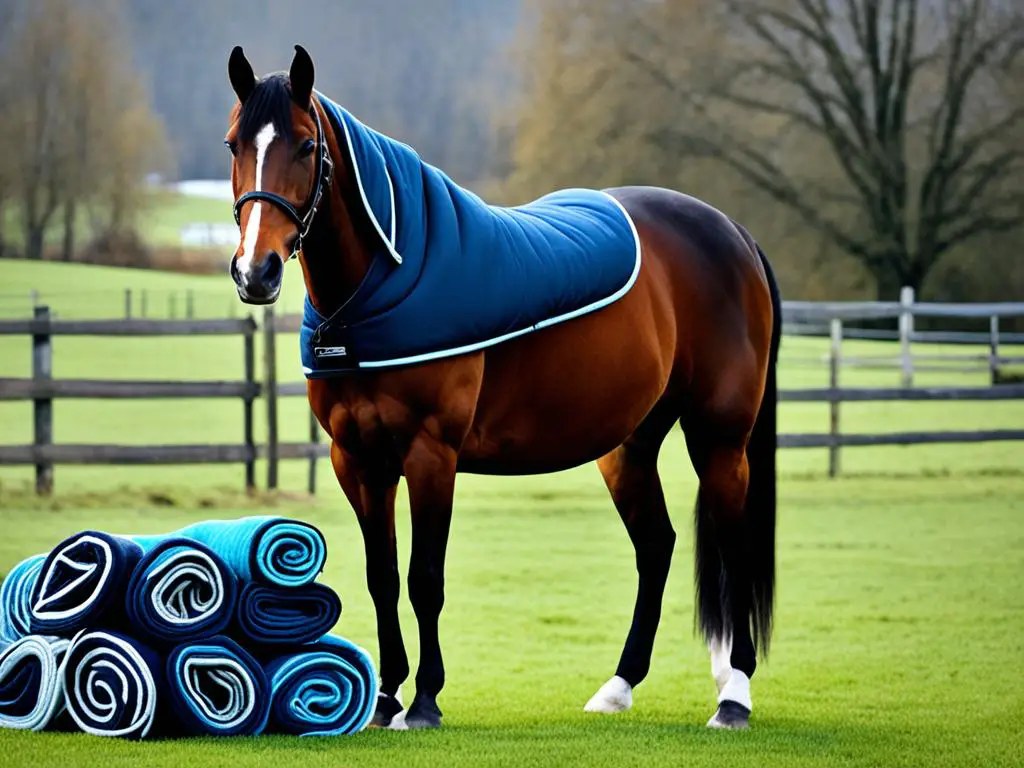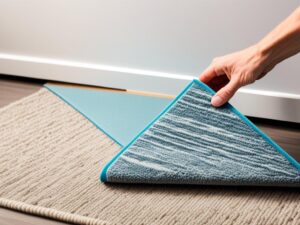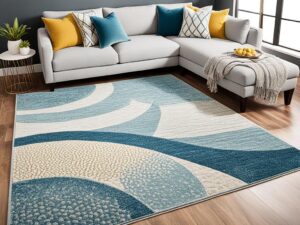When it comes to the comfort, protection, and style of your horse, choosing the right rug is crucial. With so many options available, it can be overwhelming to know where to start. That’s why we’ve put together this guide to help you make an informed decision.
From different types of horse blankets to considerations like materials and sizing, we’ll cover all the essential factors to consider when choosing the perfect rug for your equine companion.
Key Takeaways:
- Consider the filling and denier count of horse rugs to ensure optimal warmth and durability.
- Determine whether your horse will primarily be in a stable or spending time outside to select the appropriate rug for their environment.
- Choose between waterproof and water-repellent rugs based on your horse’s exposure to rain and moisture.
- For travel or riding, invest in specialized rugs designed for these purposes.
- Proper sizing and fit are essential to ensure your horse’s comfort and avoid rubbing or discomfort.
Filling and Denier
The filling of a horse rug refers to the amount of insulation it provides. It is measured in grams per square meter and determines the warmth of the rug. The higher the filling, the more heat it will trap.
Denier, on the other hand, is a unit of measurement that determines the thickness and durability of the fabric used in the rug. Fabrics with higher denier counts are sturdier, while those with lower denier counts are softer.
Understanding the filling and denier will help you choose a rug that suits your horse’s needs.
Horse Rug Filling
The filling of a horse rug plays a vital role in providing warmth and comfort to your horse. It is essential to select a rug with the appropriate filling, considering factors such as climate and the horse’s individual needs.
The filling is measured in grams per square meter (gsm), indicating the weight of the insulation material used. A higher filling weight means greater insulation and warmth. Different fillings are available, ranging from lightweight options (100gsm) for mild weather to heavyweight options (400gsm or more) for extreme cold temperatures.
When choosing the filling for your horse rug, consider the season, the horse’s living conditions, and their individual sensitivity to the cold. Some horses may have thicker coats and require less filling, while others with thinner coats may benefit from rugs with higher filling weights.
Horse Rug Denier Count
The denier count of a horse rug fabric determines its thickness and durability. It is a unit of measurement that reflects the mass in grams of a 9,000-meter-long filament of a given fiber.
Rugs with higher denier counts are generally more robust and resistant to abrasions, making them suitable for outdoor use and rugged climates. They can withstand rough play and rolling without tearing or fraying. A higher denier count also provides better protection against wind and water penetration.
On the other hand, rugs with lower denier counts are softer, lighter, and more flexible. They are often used for stable rugs or as underlayers beneath heavier turnout rugs. They provide a comfortable and snug fit, allowing freedom of movement for the horse.
Choosing the Right Filling and Denier
When selecting a horse rug, it’s essential to strike a balance between filling and denier count to meet your horse’s needs.
If your horse lives in a region with cold winters, a rug with higher filling weight (300-400gsm) and a higher denier count (1200D or higher) offers excellent insulation and durability against harsh weather conditions.
For moderate climates, a mid-weight rug with a filling weight of around 200-250gsm and a denier count of 600D-900D should provide adequate warmth and durability.
In warmer climates or during spring and autumn, a lightweight rug with a filling weight of 100gsm and a denier count of 600D or lower is suitable for providing protection from light rains and cool breezes.
Remember to consider your horse’s individual needs, the weather conditions, and any specific sensitivities they may have when selecting the filling and denier count for their rug.

Stable or Outside Use and Waterproof vs. Water-Repellent
When it comes to choosing the right horse rug, considering your horse’s living conditions and weather conditions is crucial. You need to determine whether your horse stays in the stable or spends time outside, as this will help you select the most suitable rug for their environment. Let’s explore the different options available.
Stable Rugs
Stable rugs are designed specifically for indoor use. They provide warmth and comfort to your horse while they are inside the stable. Stable rugs are typically made with soft and breathable materials that keep your horse cozy during colder temperatures. They are ideal for protecting your horse from drafts and maintaining a stable body temperature.
Turnout Rugs
If your horse spends time outside, a turnout rug is essential to keep them protected. These rugs are designed to withstand various outdoor elements and provide reliable insulation. Turnout rugs are made with durable and waterproof fabrics that keep your horse dry and comfortable in rain, snow, and wind. They are designed to withstand the rigors of outdoor activities and provide the necessary protection your horse needs.
Waterproof vs. Water-Repellent Rugs
When it comes to dealing with rainy weather, you have two options: waterproof and water-repellent rugs. Waterproof horse rugs are highly effective in heavy rain, as they prevent water from entering the fabric. They feature a waterproof membrane or coating that keeps moisture out, ensuring that your horse stays dry and comfortable, even in the wettest conditions.
Water-repellent horse rugs, on the other hand, are resistant to water penetration but not completely waterproof. They are designed to repel light rain and drizzle, providing a certain level of protection against moisture. While not as effective as waterproof rugs, they still offer a great solution for horses that spend time in moderate weather conditions.
It’s important to assess the climate in your area and consider your horse’s outdoor activities before choosing between a waterproof or water-repellent rug. If your horse is exposed to heavy rain or spends extended periods outside in wet conditions, a waterproof rug is the best choice to keep them dry and comfortable.
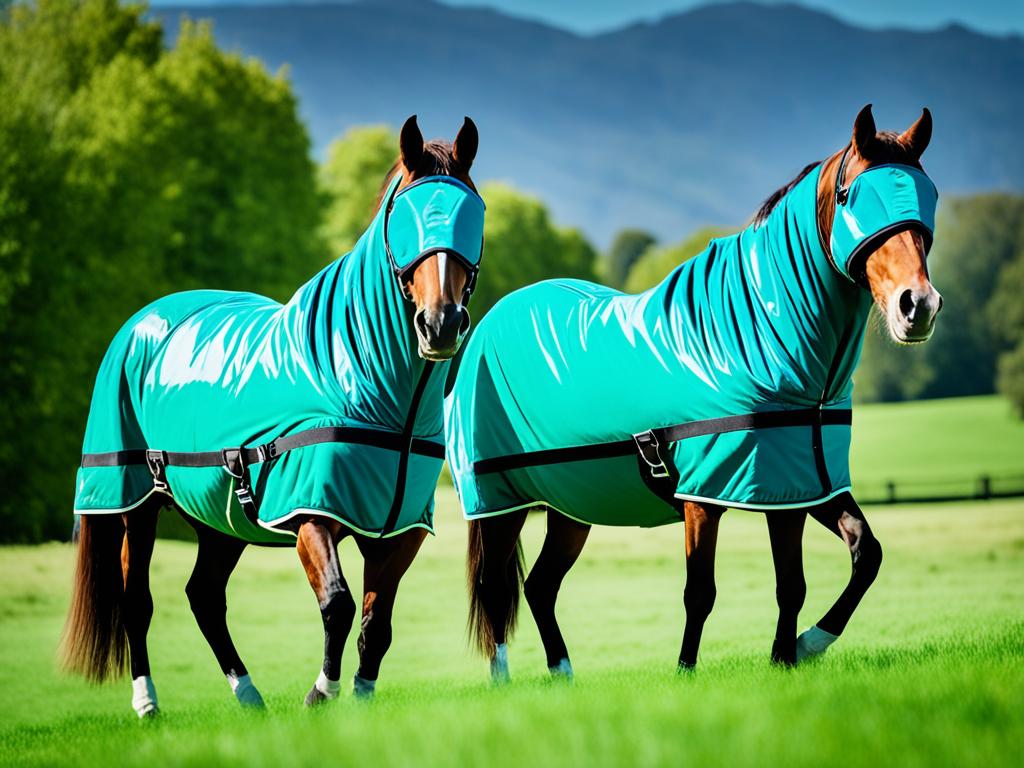
| Type of Rug | Suitable For | Waterproof | Water-Repellent |
|---|---|---|---|
| Stable Rug | Indoor Use | No | No |
| Turnout Rug | Outdoor Use | Yes | No (Light Rain) |
Table: Comparison of Stable and Turnout Rugs
By considering the type of horse rug suitable for your horse’s environment and the level of water protection required, you can make an informed decision. Whether your horse stays in the stable or ventures outside, providing them with the right rug will ensure their comfort and well-being, regardless of the weather conditions.
Transport Rug and Riding Rug
When planning to travel with your horse or ride in cold weather, it is important to have the right rugs for the occasion. Different situations call for specific types of horse rugs to ensure the comfort and protection of your equine companion.
For travel purposes, a transport rug is your go-to option. These rugs are specifically designed to be lightweight and breathable, allowing your horse to move freely and comfortably during the journey. The fabric should provide adequate warmth without causing overheating, keeping your horse cozy yet cool throughout the trip.
When it comes to riding in colder weather, an exercise rug is the perfect choice. These rugs are designed to keep your horse warm during exercise and provide protection against the elements. They are often made of insulating materials that help retain body heat. Exercise rugs also help prevent the horse’s muscles from becoming stiff in chilly temperatures, allowing for a more comfortable and enjoyable ride.
Additionally, if you participate in rainy competitions or frequently encounter wet weather conditions, a horse rain coat can be a valuable addition to your equestrian wardrobe. These coats are specifically designed to be 100% waterproof, keeping your horse dry and comfortable even in heavy rain. They provide an extra layer of protection and help prevent the horse’s coat from getting soaked, reducing the risk of chilling or discomfort.
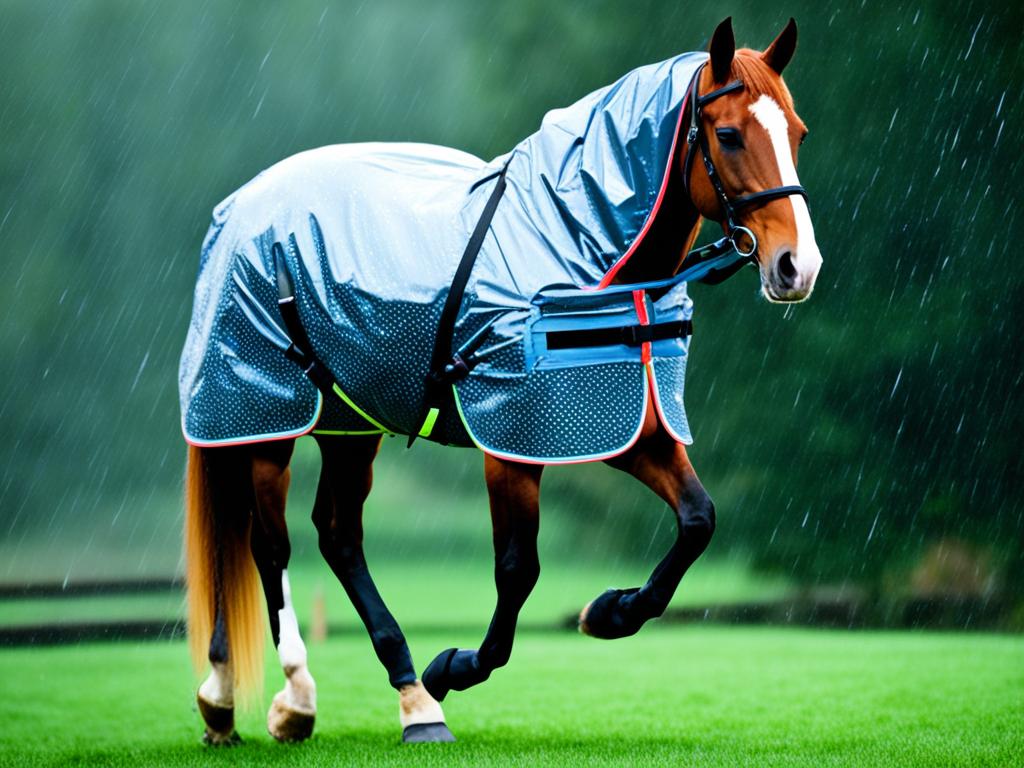
By investing in the right transport rug, exercise rug, and horse rain coat, you can ensure the comfort, well-being, and performance of your horse in various situations. Keep these essentials in mind when preparing for travel or riding in cold or wet conditions.
Conclusion
Choosing the right horse rug size is of utmost importance to ensure a proper fit and prevent any discomfort or rug rubs. To determine the correct size, it is crucial to measure your horse’s length accurately. Consider factors such as your horse’s living conditions, body condition, and climate to select the best horse rug option.
In addition to size, proper rug fitting plays a significant role in ensuring your horse’s comfort. Make sure the rug sits well on the wither, fastens firmly at the chest, and has correctly adjusted leg straps. This will prevent the rug from slipping or causing any irritation.
If your horse does experience rubbing, there are rug accessories available or seek advice from experts on finding the best brand and fit for your horse. Pay attention to factors such as breathability, durability, and overall comfort when making your selection. By following these guidelines, you can choose the perfect horse rug that not only fits well but also meets your horse’s specific needs.
